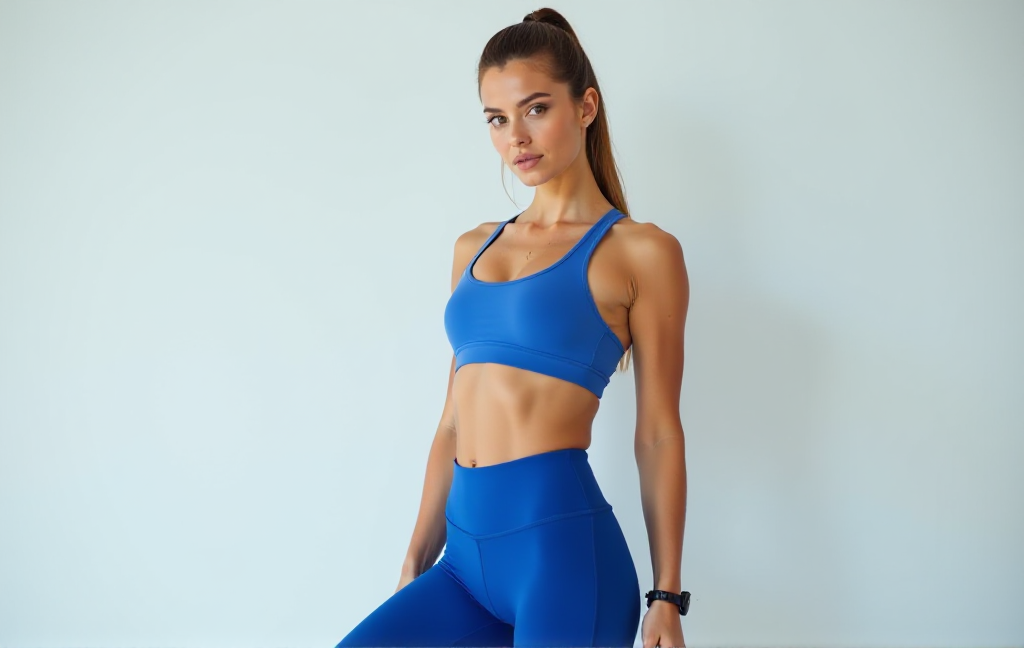Introduction: Lycra vs. Spandex – Is There a Real Difference?
People frequently confuse Lycra and Spandex due to overlapping terminology, regional language differences, and the dominance of brand names in everyday language. While both terms describe the same stretchy synthetic fiber—a polyurethane-based elastane—they reflect a classic trademark vs. generic labeling case. Lycra is a globally recognized brand name owned by Invista, whereas Spandex is the generic term used primarily in North America (with elastane preferred elsewhere). This confusion mirrors how terms like Kleenex or Band-Aid become shorthand for entire product categories, blurring the line between brand specificity and material identity.
- Lycra = Brand name for elastane (trademarked by Invista).
- Spandex = Generic U.S./Canada term for the same elastic fiber.
- Elastane = Global term (common in Europe/Asia).
Regional habits, marketing influence, and consumer unfamiliarity with trademarks perpetuate the mix-up.
Despite their shared chemical identity, the branding and labeling of these fibers often lead to misconceptions. Below, we clarify one factual claim and debunk a common myth to untangle the confusion:
Lycra is a specific brand of Spandex/elastane, not a distinct material – True
Spandex and Lycra are different materials—Spandex is thicker, and Lycra is lighter – False

What is Spandex? Origins, Properties & Uses
Spandex, also called elastane, is a synthetic fiber known for its high elasticity. It was invented in 1958 by DuPont chemist Joseph Shivers as a more durable and flexible alternative to rubber. Spandex is widely used in textiles today for its stretch and recovery properties.
Spandex fibers can stretch up to 500% of their original length and return to shape, making them ideal for form-fitting clothing.
Key Properties:
- High elasticity – Superior stretch and shape retention
- Lightweight – Adds minimal bulk to fabrics
- Durability – Resistant to abrasion and wear
- Breathability – Allows airflow and quick drying
- Sweat & oil resistance – Maintains fabric quality over time
Benefits of Spandex:
- Provide comfort and flexibility
- Enhances movement in sportswear
- Prevents sagging and deformation
- Improves compression and support in garments
Spandex is typically blended with cotton, polyester, or nylon for improved stretch and durability.
Major Applications:
Sportswear & Activewear – Leggings, swimsuits, cycling short
Undergarments – Bras, shapewear, compression wear
Casual Wear – Skinny jeans, socks, fitted T-shirts
Spandex Properties & Applications Overview
| Feature | Details |
| Elasticity | Stretches up to 500% of its original length |
| Weight | Lightweight (10-50 denier) |
| Durability | Resistant to wear and tear |
| Moisture Absorption | Low, dries quickly |
| Blending Ratio | Typically 2-20% in fabrics |
| Common Uses | Sportswear, shapewear, undergarments, medical textiles |
| Lifespan | 2-5 years depending on usage |

What is Lycra? History, Brand, and Unique Features
The Invention of Lycra by DuPont
Lycra, also known as elastane, was invented in 1958 by Joseph Shivers, a chemist at DuPont. The development of Lycra was driven by the need for a more durable, flexible, and lightweight alternative to rubber in textiles. By the 1960s, Lycra had revolutionized the fashion and sportswear industries, offering unmatched elasticity and comfort in clothing.
How Lycra Became a Brand Name
While Lycra is chemically the same as spandex (or elastane), Lycra is a trademarked brand name owned by The Lycra Company (formerly part of DuPont). The brand gained global recognition due to its high-quality standards, durability, and consistent performance. Unlike generic spandex, which varies in quality, Lycra undergoes strict testing and quality control, making it a preferred choice for premium apparel.
Unique Characteristics Compared to Generic Spandex
Although Lycra and generic spandex are chemically similar, Lycra stands out due to:
- Better Elastic Recovery – Lycra retains its shape longer than standard spandex.
- Enhanced Durability – Higher resistance to wear, stretching, and chemicals.
- Superior Comfort – Lycra blends better with other fibers, offering a smoother feel.
- Brand Reliability – Lycra ensures consistent performance across different textile applications.
Comparison Table: Lycra vs. Generic Spandex
| Feature | Lycra (Brand Name) | Generic Spandex |
| Elasticity | Stretches up to 500% and retains shape well | Stretches but may lose shape faster |
| Durability | High resistance to wear and tear | Can degrade faster with use |
| Comfort & Fit | Smooth texture, blends well with fabrics | Varies in feel and texture |
| Chemical Resistance | More resistant to sweat, oils, and chlorine | May break down faster in harsh conditions |
| Price | Typically higher due to brand quality | More affordable but varies in consistency |
| Usage | Used in high-end sportswear, shapewear, and premium apparel | Common in mass-produced textiles |

Lycra vs. Spandex: Key Differences
1. Brand vs. Generic: Understanding the Terminology
The terms Lycra and Spandex are often used interchangeably, but they have distinct meanings:
- Spandex (also known as elastane) is the generic name for a highly elastic synthetic fiber made from polyurethane. It is used globally in stretchable fabrics.
- Lycra is a trademarked brand name owned by The Lycra Company (formerly DuPont). While Lycra is chemically identical to spandex, it is produced under strict quality control standards to ensure superior performance and durability.
2. Performance and Elasticity Comparison
Lycra and generic spandex provide exceptional stretch and recovery, but Lycra offers higher durability and better shape retention over time.
- Elasticity: Lycra and spandex can stretch up to 500% of their original length, but Lycra fibers are designed to withstand repeated stretching without losing shape.
- Durability: Lycra is engineered for higher resistance to sweat, chlorine, and UV rays, making it ideal for sportswear, swimwear, and compression garments. Generic spandex may degrade faster under similar conditions.
- Comfort: Lycra blends better with fabrics like cotton, polyester, and nylon, creating a smoother and more breathable texture. Generic spandex varies in quality, sometimes feeling rougher or less comfortable.
3. Price and Market Positioning Differences
Lycra is positioned as a premium, high-quality fiber, while generic spandex is a cost-effective alternative for budget-conscious manufacturers.
| Feature | Lycra (Brand Name) | Generic Spandex |
| Elasticity | Up to 500%, retains shape longer | Up to 500%, but may lose shape faster |
| Durability | High resistance to sweat, UV, and chlorine | Can degrade faster with wear |
| Comfort & Fit | Smoother feel, blends well with fabrics | Quality varies, may feel rougher |
| Chemical Resistance | Strong resistance to oils, lotions, and chemicals | Lower resistance, may break down faster |
| Price | Higher due to brand reputation and quality | More affordable but less consistent |
| Usage | Used in premium sportswear, lingerie, and compression garments | Common in budget-friendly textiles and fast fashion |
Lycra is preferred for high-end performance wear, while generic spandex is often used in mass-market apparel.
Lycra is a trademarked brand name for spandex, owned by The Lycra Company, while spandex (also known as elastane) is the generic term for the fiber – True
Lycra and spandex are two completely different materials with distinct chemical compositions – False

How Are Lycra and Spandex Shaping the Global Textile Market?
1. Industry Trends and Major Manufacturers
The global demand for Lycra and spandex continues to grow, driven by the increasing popularity of athleisure wear, activewear, and compression garments. The market size for spandex is projected to reach $12.5 billion by 2030, with a compound annual growth rate (CAGR) of 6.2% from 2024 to 2030.
Key Industry Trends:
- Athleisure Boom: Sportswear and yoga wear brands increasingly incorporate Lycra for stretch and durability.
- Medical Applications: Growing use in compression garments and orthopedic textiles.
- Smart Fabrics: Integration of Lycra/spandex with moisture-wicking and antimicrobial technologies.
- Asia-Pacific Dominance: China, South Korea, and India lead in production and export.
Major Manufacturers:
- The Lycra Company (USA): Formerly DuPont, the inventor and global leader in Lycra fiber.
- Hyosung Corporation (South Korea): Produces Creora® spandex, the world’s largest spandex brand.
- Shaoxing Hoosens Textile (China): One of the Excellent spandex fabric manufacturers in China.
- Asahi Kasei Corporation (Japan): Known for its Roica® premium stretch fiber.

2. Sustainability Concerns: Eco-Friendly Alternatives
Despite their performance benefits, Lycra and spandex are petroleum-based fibers, raising concerns about environmental sustainability. These fibers are non-biodegradable, contributing to textile waste.
Key Environmental Issues:
- Microplastic Pollution: Washing synthetic fabrics releases microfibers into water systems.
- High Energy & Chemical Use: Spandex production requires significant energy and chemical processing.
- Non-Biodegradability: Traditional spandex takes hundreds of years to decompose.
Eco-Friendly Alternatives:
- Bio-Based Spandex: Some companies develop spandex using renewable plant-based sources (e.g., Qmonos™ spider silk fibers).
- Recycled Elastane: Brands like Adidas and Patagonia are incorporating recycled spandex in their collections.
- Degradable Spandex: Innovations in chemical treatments allow faster breakdown of spandex fibers.
- Natural Fiber Blends: Mixing spandex with organic cotton, hemp, and bamboo reduces its environmental impact.
Lycra and Spandex Market Overview
| Category | Data & Insights |
| Market Size (2024) | $8.3 billion |
| Projected Market Size (2030) | $12.5 billion |
| CAGR (2024-2030) | 6.2% |
| Largest Producer | China (over 60% of global production) |
| Top Consumers | USA, Europe, Asia-Pacific |
| Eco-Friendly Alternatives | Bio-based spandex, recycled elastane, degradable fibers |
| Sustainability Concern | Non-biodegradable, microplastic pollution |

Lycra is a type of spandex, but not all spandex is Lycra – True
Lycra is a natural fiber derived from organic materials – False
Conclusion:
When choosing between Lycra and generic spandex, both consumers and businesses should consider performance, durability, cost, and sustainability. Lycra, as a branded spandex, offers superior elasticity retention, durability, and quality control, making it ideal for high-performance sportswear, shapewear, and swimwear. Generic spandex, while more affordable, varies in quality and is suitable for budget-friendly apparel. For businesses, premium brands benefit from Lycra’s consistency, while mass-market manufacturers may prefer generic spandex to reduce costs. Additionally, eco-conscious alternatives like bio-based or recycled spandex are emerging options. Ultimately, the right choice depends on balancing quality, price, and intended use.
Related:



